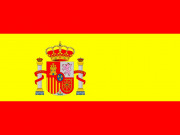HUNTER-GATHERER LAND USE STRATEGIES AND HAND STENCILS IN SOUTHERN PATAGONIA: A COMPARATIVE ANALYSIS OF THE STROBEL PLATEAU AND CARDIEL LAKE (ARGENTINA)
Resumen
Southern Patagonia rock art is characterized by the presence of a large number of hand stencils
with a wide distribution. The general aim of this paper is to contribute to the study of spatial trends
in hand stencil production in this region and its relationship with different land use strategies carried
out by hunter-gatherer groups. Here we explore the contribution that the study of this particular rock
art motif may have to understanding the demography of the human groups that occupied the area.
In particular, rock art from the Cardiel Lake low basin and the Strobel high plateau located in the
province of Santa Cruz, Argentina, is analysed. Current research suggests that these two areas
were occupied intensively and in a complementary way in the last 2,500 years (Late Holocene).
While the Cardiel Lake basin would have been mainly used for residential purposes year-round, the
Strobel Plateau occupations would have been logistic and seasonal. The results obtained make it
possible to identify the greatest importance of hand stencils in the rock art of Cardiel basin. On the
other hand, the participation of all age groups is evident in the production of this type of motif, both
in the low basin and the Strobel Plateau. The latter fact complicates the previously proposed
panorama and raises a new series of questions for archaeological research.
Descargas
Publicado
Cómo citar
Número
Sección
Licencia
Los autores retienen los derechos de autor y otorgan a Revista Inclusiones el derecho de publicación bajo Creative Commons Attribution 4.0 International (CC BY 4.0). Esto permite el uso, distribución y reproducción en cualquier medio, siempre que se otorgue la debida atribución al autor.










